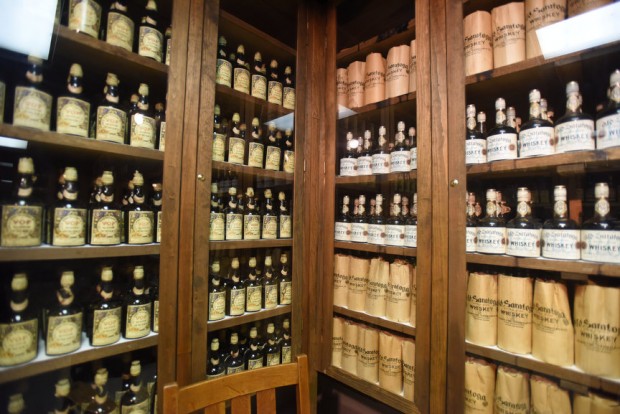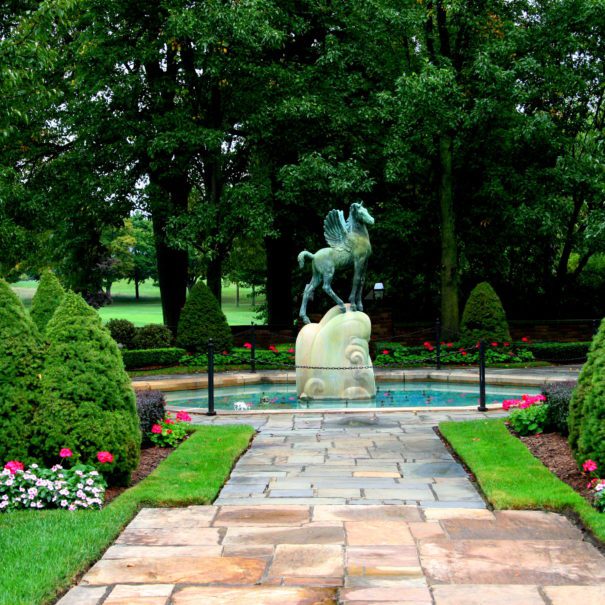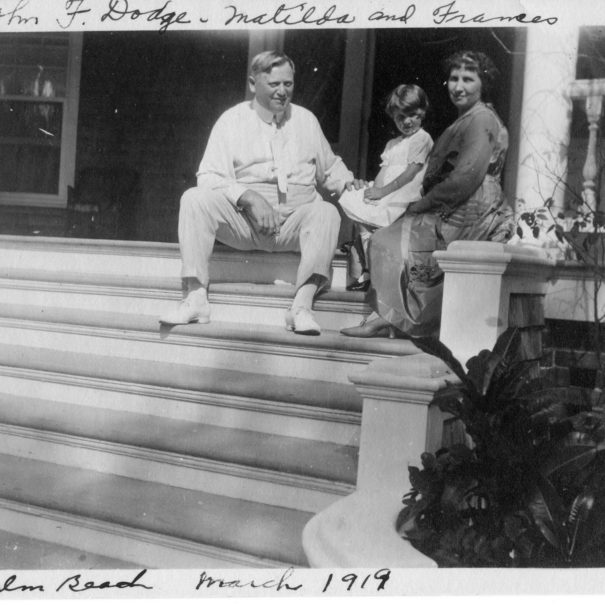In times of celebration or in grief, in wartime or in peace, in the public eye or in a basement speakeasy, alcohol has played a role in American society since its beginnings. As novelist Captain Frederick Marryat said in 1839, “I’m sure the Americans can fix nothing without a drink.”
From 1920 to 1933, the 18th Amendment, or “Prohibition”, tried to legislate alcohol away from America’s lips. Some states, however, went dry before the country did. In 1917, the citizens of Michigan approved an amendment banning alcohol, which gave some enterprising residents ample opportunity to become experts at illegally obtaining alcohol before National Prohibition began. And become experts, they did. Historians estimate that 75% of the alcohol that came into the country during this time came across the Detroit River. Detroit’s 1,800 licensed saloons before the state Prohibition in 1918 mushroomed into an estimated 25,000 illegal “blind pigs” in 1925.
The story of alcohol and Prohibition is entwined in the story of Meadow Brook Hall. Matilda Wilson’s parents, George and Margaret Rausch, owned several saloons after immigrating from Canada to Detroit in 1885. John Dodge and his brother Horace were notorious drinkers who ruffled feathers in genteel Detroit society. Perhaps the most tangible reminder of Prohibition is the China Vault of The Hall, tucked away in the entertainment level.
On the Behind the Scenes tour, guests can walk into the China Vault to view a wide variety of artifacts — including a wide variety of alcohol. A common misconception is that Prohibition banned the consumption of alcohol: It did not. Some enterprising Americans purchased cases of their favorite spirits to last through what they expected to be a very short Prohibition. It will likely never be known if that is why Meadow Brook has so many pre-Prohibition bottles of Old Saratoga, King William IV VOP Scotch Whiskey and “Johnnie Walker” it its collection, but another explanation may be convenience.
There were no corner liquor stores in 1917, so John Dodge purchased cases of alcohol at a time for entertaining. With the need to stock his Detroit home, the Meadow Brook Farms house and clubhouse, his yacht and his northern Michigan lodge, it’s possible that there were a lot of leftover bottles when they were combined after his death in 1920. As of today, Meadow Brook has an estimated 240 bottles of just the Old Saratoga in its collection.
 Old Saratoga, John Dodge’s favorite whiskey, is best known for being prominently featured in Cassius Marcellus Coolidge’s 1894 painting of dogs playing poker. This cute and iconic image was used by Rosskam, Gerstley & Co to advertise their product.
Old Saratoga, John Dodge’s favorite whiskey, is best known for being prominently featured in Cassius Marcellus Coolidge’s 1894 painting of dogs playing poker. This cute and iconic image was used by Rosskam, Gerstley & Co to advertise their product.
In addition to the pre-Prohibition era liquors, Meadow Brook has alcohol from when Frances Dodge took her parents, Matilda and Alfred Wilson, on a world tour with her inheritance from the Dodge estate. While Frances purchased gemstones, zebras, and gowns on her trip, she also bought cases of KWV South African liquor. The Hall’s collection includes unopened Paarlita Cocktail, Cocktail Dry, and Very Old South African Brandy. Some of these bottles do not even exist in the KWV Archives.
If viewing the China Vault with its wide variety of vintage liquors sounds intoxicating, purchase tickets for a Behind the Scenes tour.
This article appears in the Spring 2016 issue of Meadow Brook Magazine. The magazine publishes bi-annually and Meadow Brook Members receive it as part of their membership.



Great article. Thanks for keeping us informed.